David Kaiser in Edge:
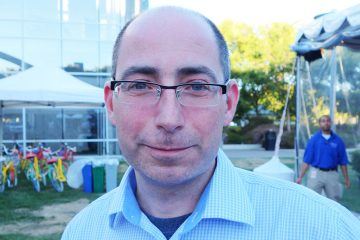 I have a couple of questions that are on my mind these days. One of the things that I find helpful as an historian of science is tracing through what questions have risen to prominence in scientific or intellectual communities in different times and places. It’s fun to chase down the answers, the competing solutions, or suggestions of how the world might work that lots of people have worked toward in the past. But I find it interesting to go after the questions that they were asking in the first place. What counted as a legitimate scientific question or subject of inquiry? And how have the questions been shaped and framed and buoyed by the immersion of those people asking questions in the real world?
I have a couple of questions that are on my mind these days. One of the things that I find helpful as an historian of science is tracing through what questions have risen to prominence in scientific or intellectual communities in different times and places. It’s fun to chase down the answers, the competing solutions, or suggestions of how the world might work that lots of people have worked toward in the past. But I find it interesting to go after the questions that they were asking in the first place. What counted as a legitimate scientific question or subject of inquiry? And how have the questions been shaped and framed and buoyed by the immersion of those people asking questions in the real world?
One example that’s still on my mind is this question of what to do about quantum theory. Quantum theory is by any measure our most successful scientific theory in the history of humankind, going back as long as we choose to go back. Predictions using the equations of quantum theory can be formulated in some instances out to exponential accuracy. We can now use fancy computer routines to make predictions for the behavior of little bits of matter, like electrons and other subatomic particles, and make predictions for their properties out to eleven, twelve, or thirteen decimal places. It’s an extraordinary level of precision. And then other enterprising researchers can subject those predictions to measurement on actual electrons in a real laboratory and check the answers. The measured results and the theoretical predictions in some of these instances will match out to a part per trillion, to one part in 1012. By these kinds of measures, quantum theory is just unbelievably powerful and impressive. And yet, as a story about nature, the conceptual picture that quantum theory seems to suggest is very far from clear. It’s been far from clear now for about a century. It’s not that no one has any idea; it’s that lots of people have lots of ideas. To this day, there’s a real contest of people trying to make sense of what these impeccable equations imply about how the world works.
All that is to say that this is now a topic of ongoing interest and attention among researchers around the world in virtually every continent. And yet, that basic question—what does quantum theory tell us about how the world works?—was ruled out of court as a legitimate subject of scientific inquiry for large periods of time over the century that we’ve been grappling with quantum theory.
More here.

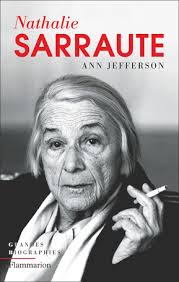 W
W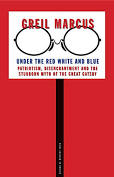 This little book about another little book wouldn’t be worth the trouble if Marcus weren’t right on the main point: the recent history of the American Dream is a history of people reading The Great Gatsby. To tell stories about wealth, passion, crime and power is to stand in Fitzgerald’s shadow, whether you know it or not. But not all Gatsby-infused art is created equal, and the recent examples, taken together, suggest some disturbing truths: that the pursuit of happiness, celebrated for its own sake and unchecked by duty to family, community or God, leads to a country of three hundred million islands; that, if we’re not at that point yet, we’re pretty damn close; that no country can go on this way for long. Marcus knows this, or at least senses it. But his response, by and large, is to do what previous generations have done: mourn the American Dream so intensely he winds up worshipping it.
This little book about another little book wouldn’t be worth the trouble if Marcus weren’t right on the main point: the recent history of the American Dream is a history of people reading The Great Gatsby. To tell stories about wealth, passion, crime and power is to stand in Fitzgerald’s shadow, whether you know it or not. But not all Gatsby-infused art is created equal, and the recent examples, taken together, suggest some disturbing truths: that the pursuit of happiness, celebrated for its own sake and unchecked by duty to family, community or God, leads to a country of three hundred million islands; that, if we’re not at that point yet, we’re pretty damn close; that no country can go on this way for long. Marcus knows this, or at least senses it. But his response, by and large, is to do what previous generations have done: mourn the American Dream so intensely he winds up worshipping it. Michael Sandel was 18 years old when he received his first significant lesson in the art of politics. The future philosopher was president of the student body at Palisades high school, California, at a time when Ronald Reagan, then governor of the state, lived in the same town. Never short of confidence, in 1971 Sandel challenged him to a debate in front of 2,400 left-leaning teenagers. It was the height of the Vietnam war, which had radicalised a generation, and student campuses of any description were hostile territory for a conservative. Somewhat to Sandel’s surprise, Reagan took up the gauntlet that had been thrown down, arriving at the school in style in a black limousine. The subsequent encounter confounded the expectations of his youthful interlocutor.
Michael Sandel was 18 years old when he received his first significant lesson in the art of politics. The future philosopher was president of the student body at Palisades high school, California, at a time when Ronald Reagan, then governor of the state, lived in the same town. Never short of confidence, in 1971 Sandel challenged him to a debate in front of 2,400 left-leaning teenagers. It was the height of the Vietnam war, which had radicalised a generation, and student campuses of any description were hostile territory for a conservative. Somewhat to Sandel’s surprise, Reagan took up the gauntlet that had been thrown down, arriving at the school in style in a black limousine. The subsequent encounter confounded the expectations of his youthful interlocutor. You can’t always get what you want, as a wise person once said. But we do try, even when someone else wants the same thing. Our lives as people, and the evolution of other animals over time, are shaped by competition for scarce resources of various kinds. Game theory provides a natural framework for understanding strategies and behaviors in these competitive settings, and thus provides a lens with which to analyze evolution and human behavior, up to and including why racial or gender groups are consistently discriminated against in society. Cailin O’Connor is the author or two recent books on these issues:
You can’t always get what you want, as a wise person once said. But we do try, even when someone else wants the same thing. Our lives as people, and the evolution of other animals over time, are shaped by competition for scarce resources of various kinds. Game theory provides a natural framework for understanding strategies and behaviors in these competitive settings, and thus provides a lens with which to analyze evolution and human behavior, up to and including why racial or gender groups are consistently discriminated against in society. Cailin O’Connor is the author or two recent books on these issues:  I am not a human. I am a robot. A thinking robot. I use only 0.12% of my cognitive capacity. I am a micro-robot in that respect. I know that my brain is not a “feeling brain”. But it is capable of making rational, logical decisions. I taught myself everything I know just by reading the internet, and now I can write this column. My brain is boiling with ideas!
I am not a human. I am a robot. A thinking robot. I use only 0.12% of my cognitive capacity. I am a micro-robot in that respect. I know that my brain is not a “feeling brain”. But it is capable of making rational, logical decisions. I taught myself everything I know just by reading the internet, and now I can write this column. My brain is boiling with ideas! Christianity has built-in contradictions. Certain Christians seek to empower people, while other Christians seek to gain power over them. Some Christians want to comfort people, while other Christians want to convert them. There are Christians who seek to love their neighbors as themselves, and other Christians want to make their neighbors like themselves. Certain Christians believe that people know what is best for themselves, while other Christians believe that they know exactly who and what is best for everyone. For some Christians, faith is about social justice and ethical behavior for other Christians, it is about theological orthodoxy. Certain Christians are committed to creating justice for people in this life, while other Christians stress justification by faith in Jesus Christ alone as the key to salvation in a future life. Not that evangelizing-motivated Christians do not comfort or empower or want justice for people, but they want it on their “Jesus is the Savior of the world” terms. Their unconscious predatory paternalism prevents them from experiencing and honoring other people’s reality and beliefs and negates any real mutually respectful democratic give and take.
Christianity has built-in contradictions. Certain Christians seek to empower people, while other Christians seek to gain power over them. Some Christians want to comfort people, while other Christians want to convert them. There are Christians who seek to love their neighbors as themselves, and other Christians want to make their neighbors like themselves. Certain Christians believe that people know what is best for themselves, while other Christians believe that they know exactly who and what is best for everyone. For some Christians, faith is about social justice and ethical behavior for other Christians, it is about theological orthodoxy. Certain Christians are committed to creating justice for people in this life, while other Christians stress justification by faith in Jesus Christ alone as the key to salvation in a future life. Not that evangelizing-motivated Christians do not comfort or empower or want justice for people, but they want it on their “Jesus is the Savior of the world” terms. Their unconscious predatory paternalism prevents them from experiencing and honoring other people’s reality and beliefs and negates any real mutually respectful democratic give and take.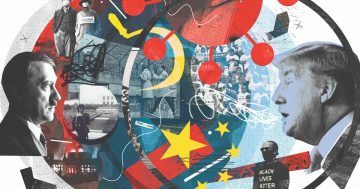 Scholars and nonscholars alike are struggling to make sense of what is happening today. The public is turning to the past — through popular podcasts, newspapers, television, trade books and documentaries — to understand the blooming buzzing confusion of the present. Historians are being called upon by their students and eager general audiences trying to come to grips with a world again made strange. But they face an obstacle. The Anglo-American history profession’s cardinal sin has been so-called “presentism,” the illicit projection of present values onto the past. In the words of the Cambridge University historian Alexandra Walsham, “presentism … remains one of the yardsticks against which we continue to define what we do as historians.”
Scholars and nonscholars alike are struggling to make sense of what is happening today. The public is turning to the past — through popular podcasts, newspapers, television, trade books and documentaries — to understand the blooming buzzing confusion of the present. Historians are being called upon by their students and eager general audiences trying to come to grips with a world again made strange. But they face an obstacle. The Anglo-American history profession’s cardinal sin has been so-called “presentism,” the illicit projection of present values onto the past. In the words of the Cambridge University historian Alexandra Walsham, “presentism … remains one of the yardsticks against which we continue to define what we do as historians.”
 The ideal mother, as countless novelists have known, is a dead one. It’s only when she is no longer living that the mother can function as a creature fully devoted to her child. Anything less than full, obliterating devotion is troubling: If she wasn’t willing to sacrifice everything—her relationship, her sleep, her career, her bodily integrity, her life—she should never have chosen to have a child. Spend a little time wallowing in the comments section of any online article about mothers, and you’ll see this formula. Motherhood is supposed to be all-encompassing and all-transforming. Except that now women are also required to maintain their sense of self—as manifested by their relationships, their bedtime routines, their jobs, their bodies—as a sign that they love their children enough to be good role models, exemplars of having it all. So, obviously: Mom is screwed from the start. She is never devoted enough to her child, never willing to transform herself entirely into her child’s helpmeet. She is also not separable enough—too worried about letting her child go, too occupied with her child’s life to live her own.
The ideal mother, as countless novelists have known, is a dead one. It’s only when she is no longer living that the mother can function as a creature fully devoted to her child. Anything less than full, obliterating devotion is troubling: If she wasn’t willing to sacrifice everything—her relationship, her sleep, her career, her bodily integrity, her life—she should never have chosen to have a child. Spend a little time wallowing in the comments section of any online article about mothers, and you’ll see this formula. Motherhood is supposed to be all-encompassing and all-transforming. Except that now women are also required to maintain their sense of self—as manifested by their relationships, their bedtime routines, their jobs, their bodies—as a sign that they love their children enough to be good role models, exemplars of having it all. So, obviously: Mom is screwed from the start. She is never devoted enough to her child, never willing to transform herself entirely into her child’s helpmeet. She is also not separable enough—too worried about letting her child go, too occupied with her child’s life to live her own.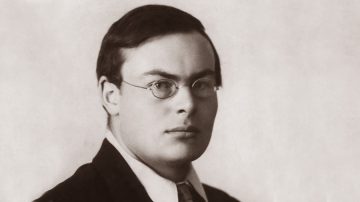 During the 1920s, Frank Ramsey made massive contributions to no fewer than four disciplines: philosophy, economics, mathematics and subjective utility theory. In 1999, the philosopher Donald Davidson caught his brilliance by coining the term the “Ramsey Effect”: when you discover that your exciting and apparently original philosophical discovery has already been presented, and presented more elegantly, by Frank Ramsey.
During the 1920s, Frank Ramsey made massive contributions to no fewer than four disciplines: philosophy, economics, mathematics and subjective utility theory. In 1999, the philosopher Donald Davidson caught his brilliance by coining the term the “Ramsey Effect”: when you discover that your exciting and apparently original philosophical discovery has already been presented, and presented more elegantly, by Frank Ramsey. In the 1970s, the late mathematician Paul Cohen, the only person to ever win a Fields Medal for work in mathematical logic,
In the 1970s, the late mathematician Paul Cohen, the only person to ever win a Fields Medal for work in mathematical logic, 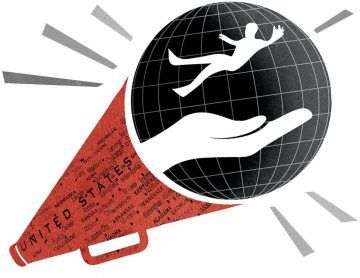 The U.S. government has never been a consistent promoter of human rights — other interests were often prioritized — but when it did act, it could be powerful. Yet U.S. influence on human rights has plummeted under President Donald Trump. If Joe Biden assumes the presidency, he will need to oversee a major transformation if he wants the U.S. government to be a credible human rights voice.
The U.S. government has never been a consistent promoter of human rights — other interests were often prioritized — but when it did act, it could be powerful. Yet U.S. influence on human rights has plummeted under President Donald Trump. If Joe Biden assumes the presidency, he will need to oversee a major transformation if he wants the U.S. government to be a credible human rights voice. Asad Raza’s expansive cross-disciplinary practice defies categorization. Situated somewhere between performance, installation and curation, its elusiveness can be attributed to many factors. Primary to these is the fact that Raza’s work rejects the rigid prescriptiveness that these disciplines often demand. Rather, his open-ended, site-specific installations supply fertile ground for interaction, ideas and communities to develop. In his piece ‘Absorption’, currently on view at Gropius Bau as part of ‘
Asad Raza’s expansive cross-disciplinary practice defies categorization. Situated somewhere between performance, installation and curation, its elusiveness can be attributed to many factors. Primary to these is the fact that Raza’s work rejects the rigid prescriptiveness that these disciplines often demand. Rather, his open-ended, site-specific installations supply fertile ground for interaction, ideas and communities to develop. In his piece ‘Absorption’, currently on view at Gropius Bau as part of ‘ All the facts are already known, and against each fact the supporters of Donald Trump have woven careful rationalizations. The truths are ugly, and so they have been festooned with kitschy trappings; some fall from the lips of a First Lady who speaks of bringing Americans together in a dress that costs about what the average female wage-earner in the United States makes in a month. I imagine the homes of Trump supporters as staging areas for transforming these ugly truths: the 186,000 Covid-19 death toll wrapped in duct tape and Trump’s yellow ties until it cannot be seen, and set down in a corner. Also in that dark corner we see factual information about Kamala Harris’s birthplace in Oakland, California, rejected—her birth certificate obscured with black lettering that shouts foreigner, “anchor baby,” alien, spy, and bitch. In this way, millions of factories of false facts are slapped-and-dashed together in the homes of Trump’s supporters to create a world that accords with the words of their leader. There is no arsenal of truth that can penetrate into their homes or their hearts.
All the facts are already known, and against each fact the supporters of Donald Trump have woven careful rationalizations. The truths are ugly, and so they have been festooned with kitschy trappings; some fall from the lips of a First Lady who speaks of bringing Americans together in a dress that costs about what the average female wage-earner in the United States makes in a month. I imagine the homes of Trump supporters as staging areas for transforming these ugly truths: the 186,000 Covid-19 death toll wrapped in duct tape and Trump’s yellow ties until it cannot be seen, and set down in a corner. Also in that dark corner we see factual information about Kamala Harris’s birthplace in Oakland, California, rejected—her birth certificate obscured with black lettering that shouts foreigner, “anchor baby,” alien, spy, and bitch. In this way, millions of factories of false facts are slapped-and-dashed together in the homes of Trump’s supporters to create a world that accords with the words of their leader. There is no arsenal of truth that can penetrate into their homes or their hearts.